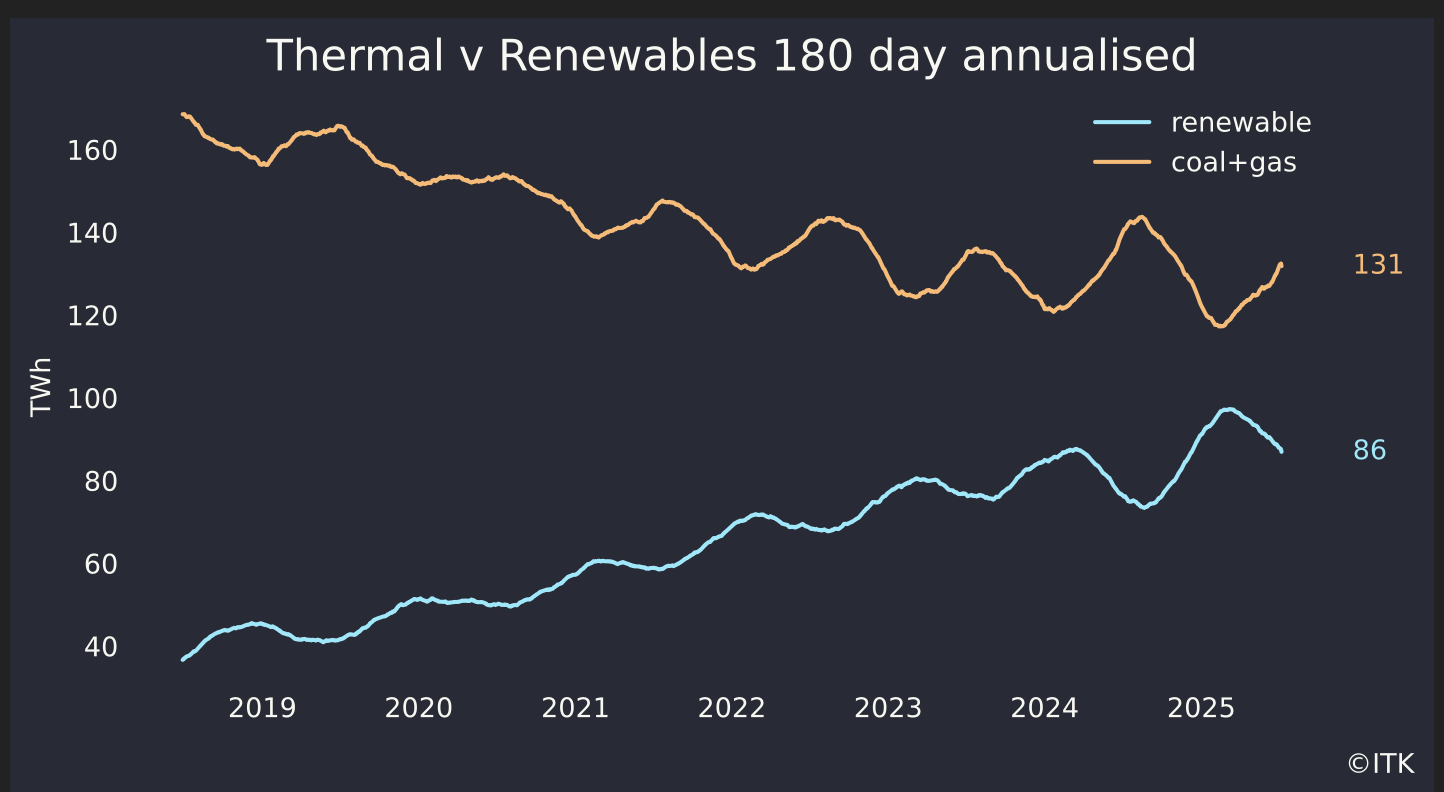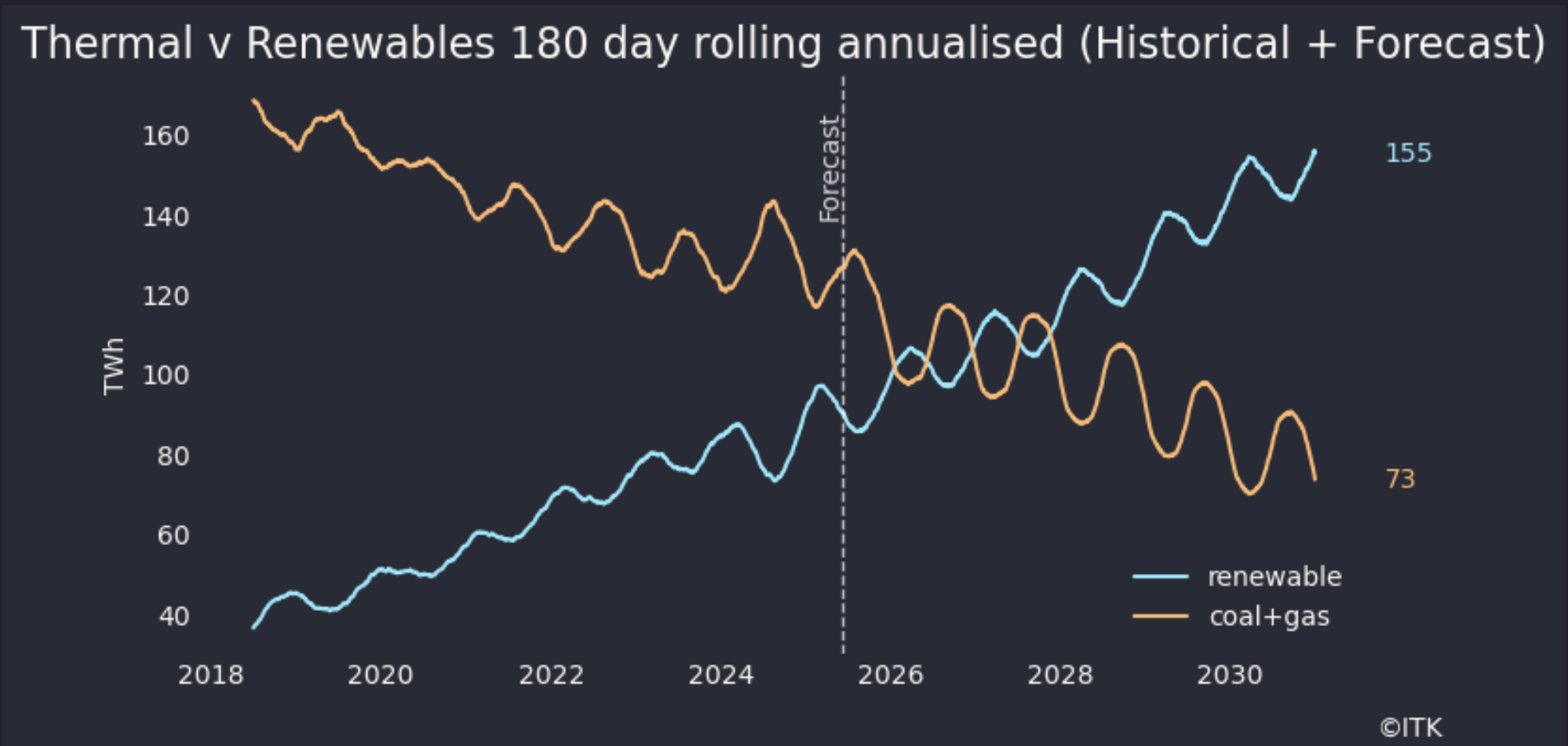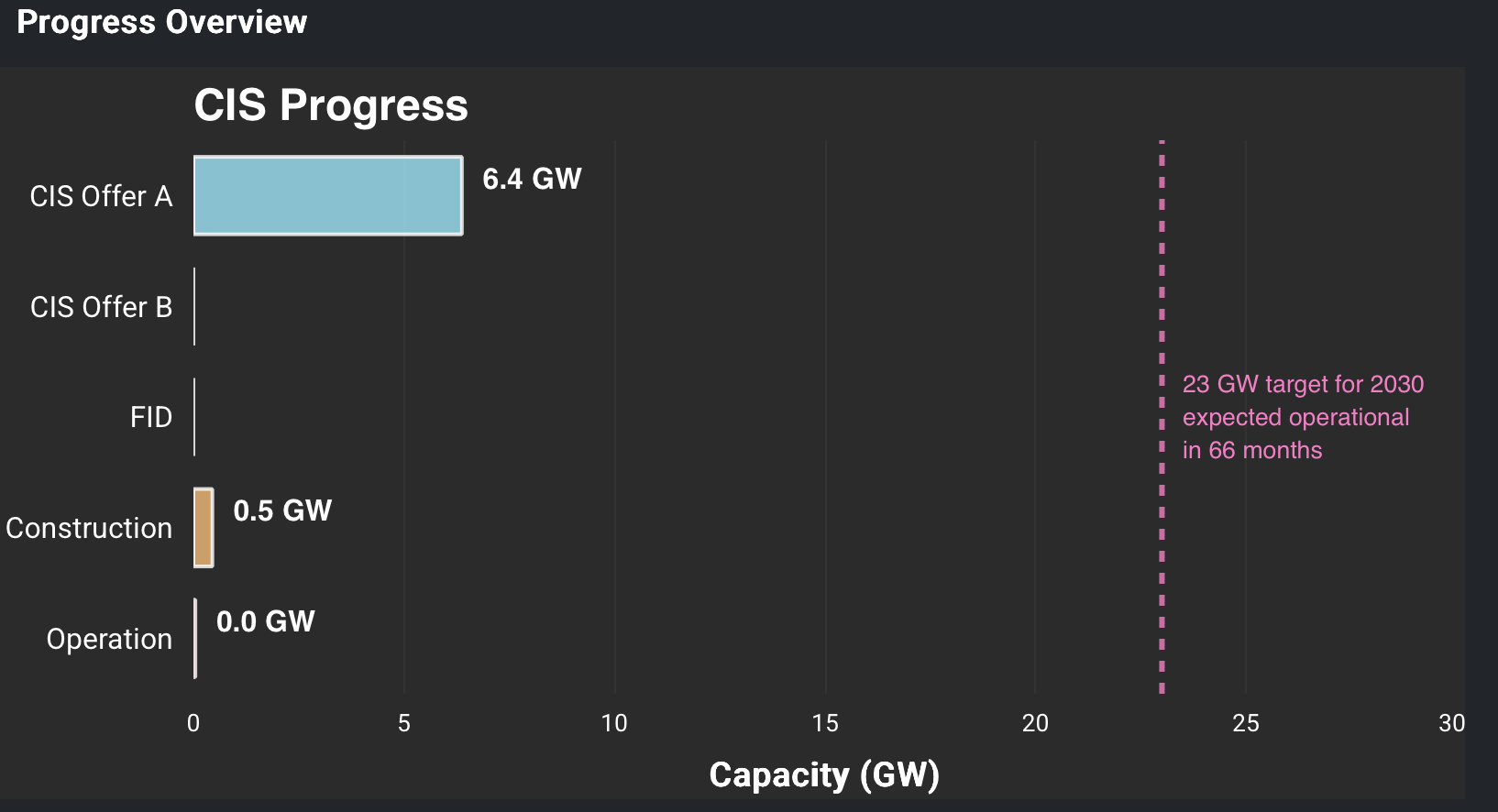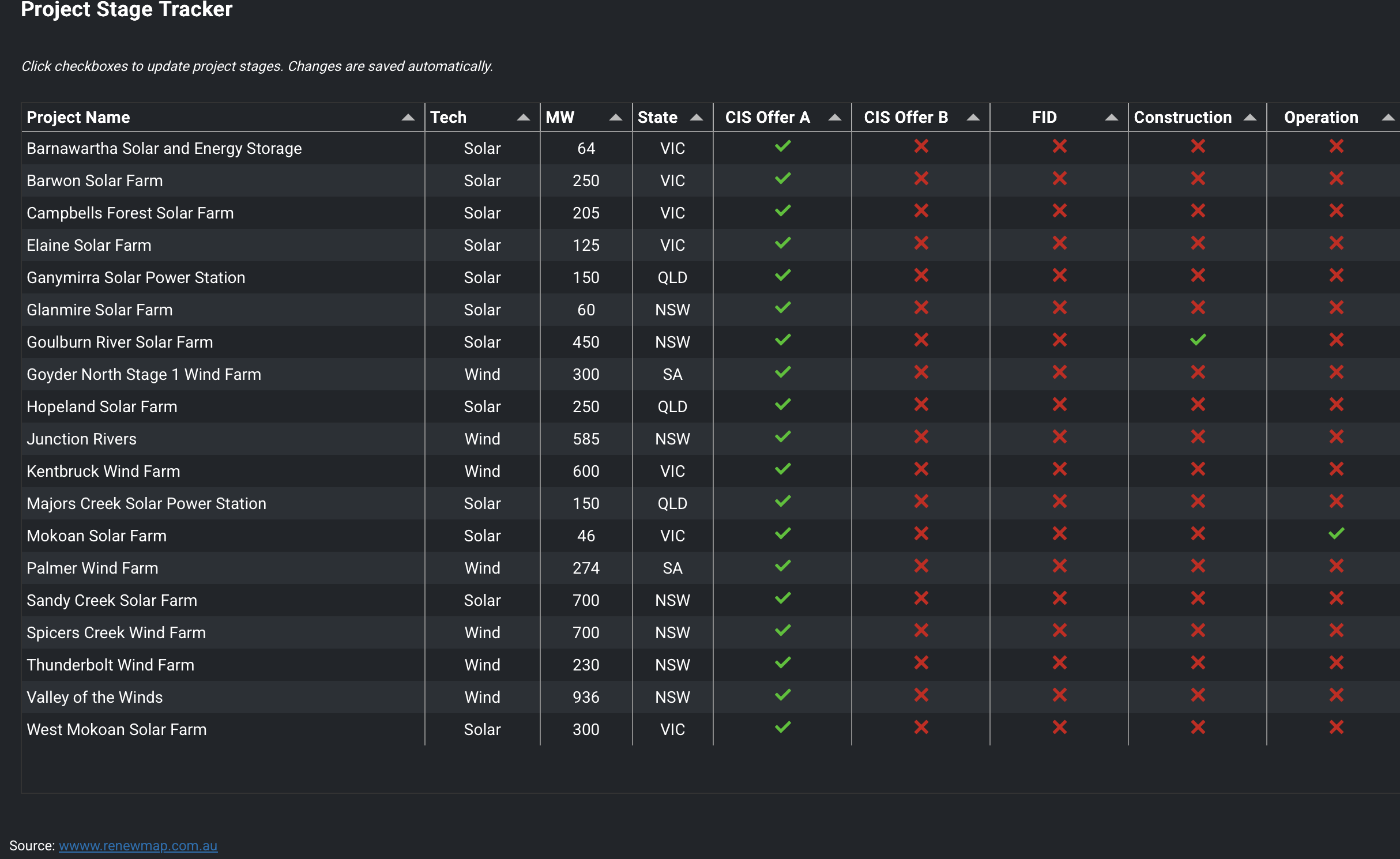Tracking 23 GW by 2030
A key issue in Australia is decarbonising electricity. Along the journey we have found many obstacles but maintained the pace.
Using data from Global Roam’s NEM Review and using a 180 day moving average, which lags a little bit but also shows the seasonality we can see at once how far we’ve come and how far we have to go. We are not yet half way.
For those that are interested and using ITK’s forecasting model we predict this figure will develop as shown below. The figure is a meld of the history, shown above, with ITK’s half hourly forecasts from our forecasting model.
The biggest policy driver between now and 2030 is the Federal Govt’s CIS. Although there are separate tenders for dispatchible power, which in practice mostly means batteries, and energy I focus very heavily on the energy component. That calls for 23 GW of new wind and solar to be operational by 2030.
After having said a couple of times on the EnergyInsiders podcast that none of the 6 GW awarded in the first 6 GW of energy to receive a Stage A grant, had yet reached FID (Final Investment Decision) I was contacted by someone that actually knows what they are talking about to point out that two solar projects have indeed reached FID, one a small solar project, is operating, and a larger one has entered construction.
As such here is the ITK version of the CIS 23 GW by 2030 tracker.




